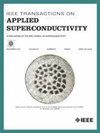4-Bit Factorization Circuit Composed of Multiplier Units With Superconducting Flux Qubits Toward Quantum Annealing
IF 1.7
3区 物理与天体物理
Q3 ENGINEERING, ELECTRICAL & ELECTRONIC
引用次数: 0
Abstract
Prime factorization (由带有超导通量微微子的乘法器单元组成的 4 位因式分解电路实现量子退火
质数因式分解(P = M × N)被认为是量子计算中的一项前景广阔的应用。我们在实验中使用超导通量量子比特进行量子退火(QA),实现了 4 位因式分解。我们提出的方法使用一个超导量子电路来实现乘法器哈密顿,当整数 P 初始设定时,该电路在 QA 之后提供 M 和 N 的组合作为因式分解解。电路由多个乘法器单元(MU)和连接量子比特组成。其关键点在于将乘法器哈密顿原生实现到超导量子电路中,并采用铌多层工艺和量子比特专用约瑟夫森结进行制造。4 位因式分解电路由 32 个超导通量量子比特组成。与使用嵌合图架构的传统方法相比,我们的方法用更少的量子位实现了哈密顿,因此具有更优越的可扩展性。我们在 10 mK 下进行了实验,以澄清使用量子比特的 MU 相互连接的有效性。我们演示了在 4.2 K 条件下进行的实验,以及对整数四、六和九的因式分解进行的模拟。
本文章由计算机程序翻译,如有差异,请以英文原文为准。
求助全文
约1分钟内获得全文
求助全文
来源期刊

IEEE Transactions on Applied Superconductivity
工程技术-工程:电子与电气
CiteScore
3.50
自引率
33.30%
发文量
650
审稿时长
2.3 months
期刊介绍:
IEEE Transactions on Applied Superconductivity (TAS) contains articles on the applications of superconductivity and other relevant technology. Electronic applications include analog and digital circuits employing thin films and active devices such as Josephson junctions. Large scale applications include magnets for power applications such as motors and generators, for magnetic resonance, for accelerators, and cable applications such as power transmission.
 求助内容:
求助内容: 应助结果提醒方式:
应助结果提醒方式:


